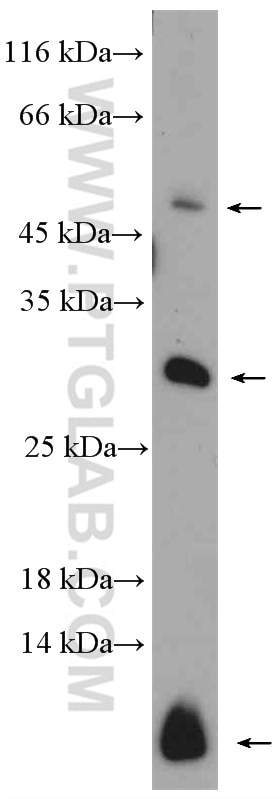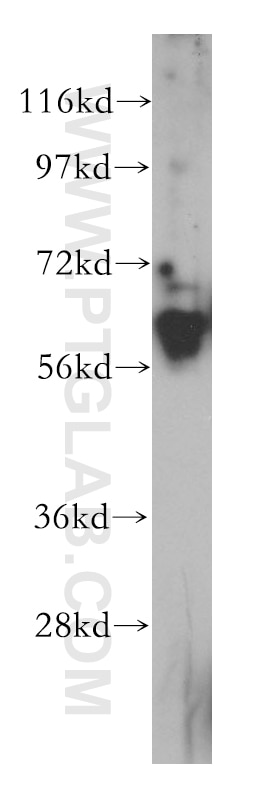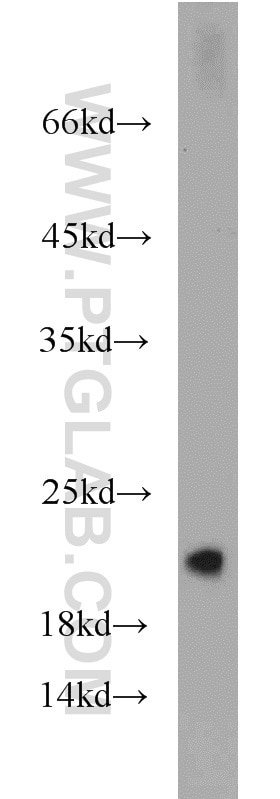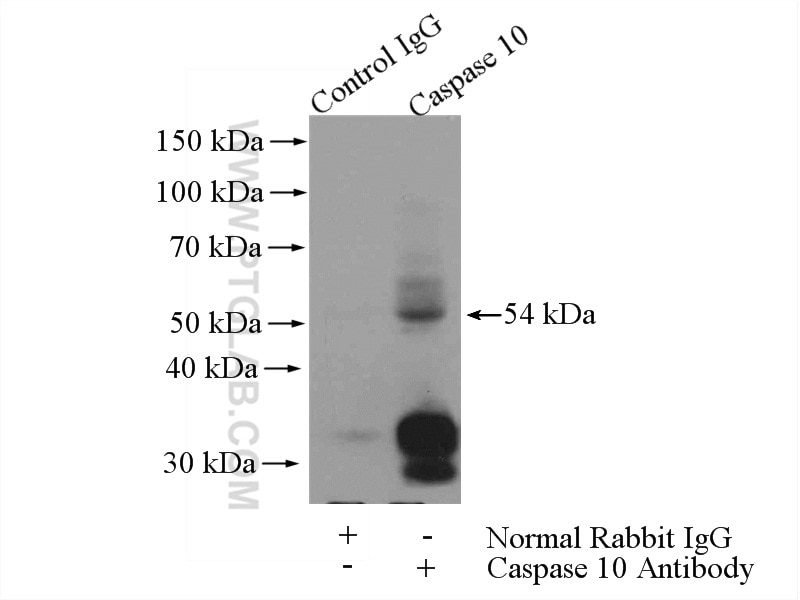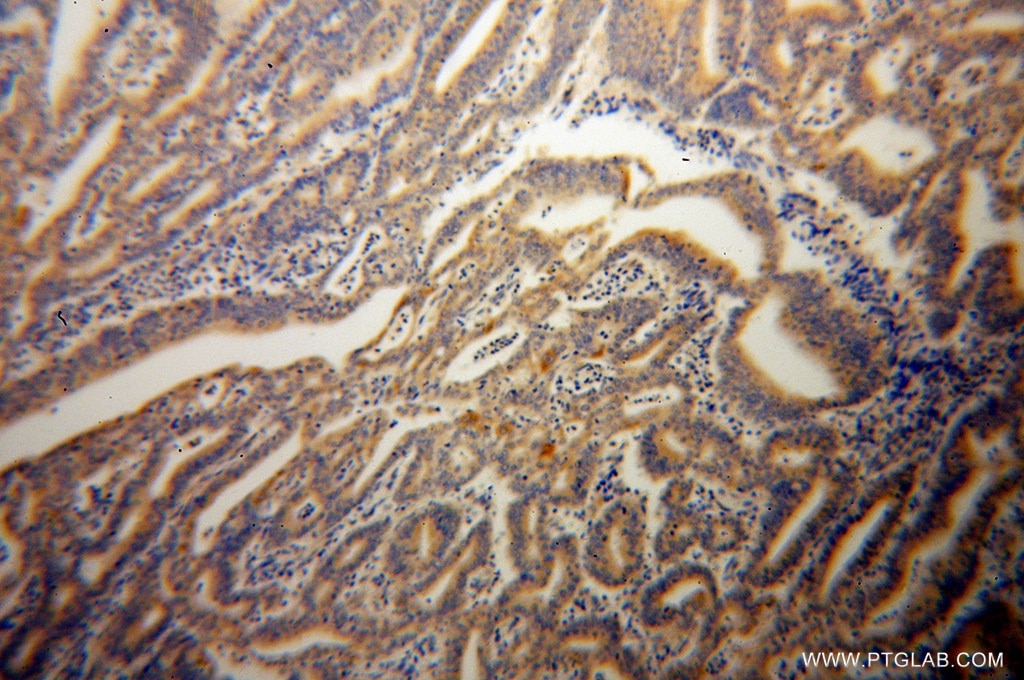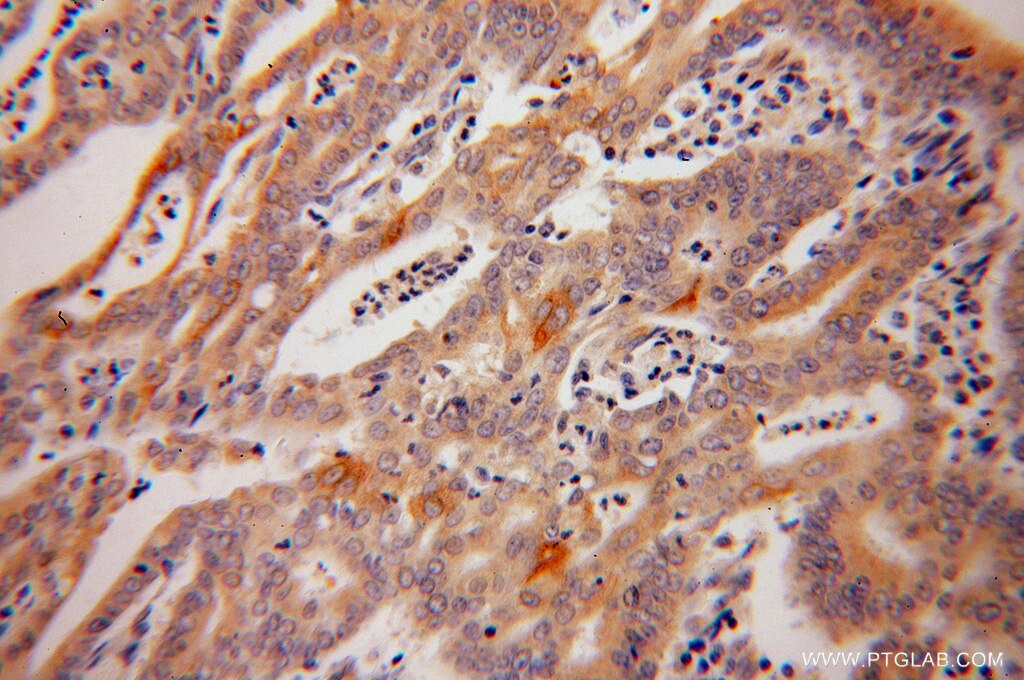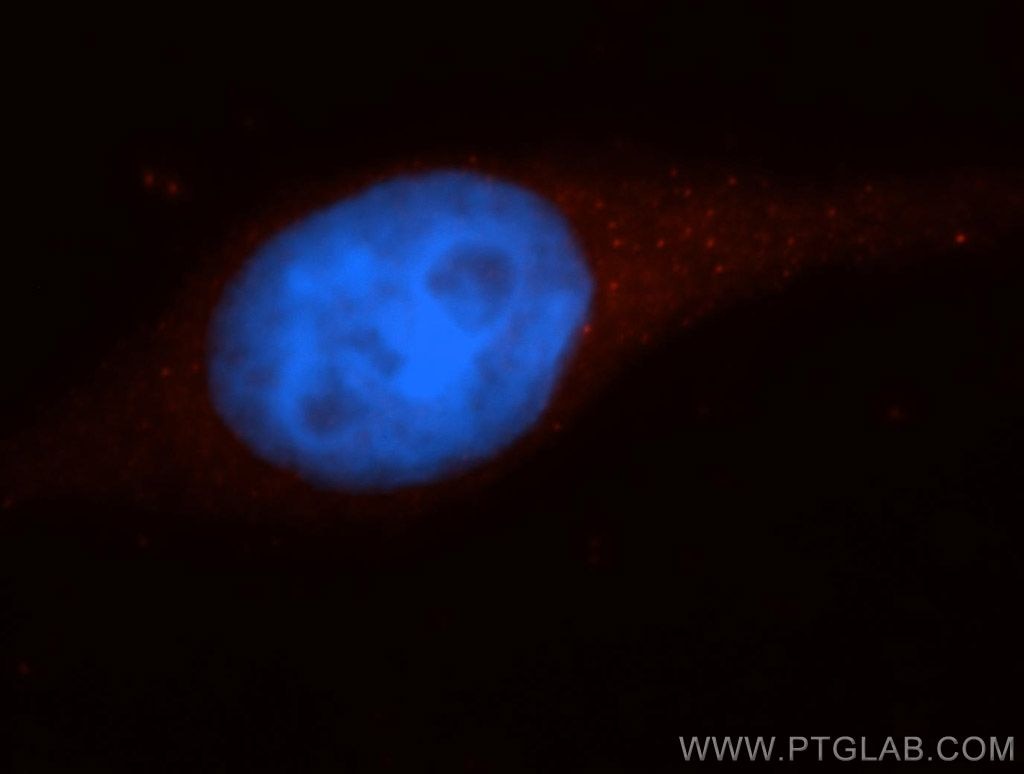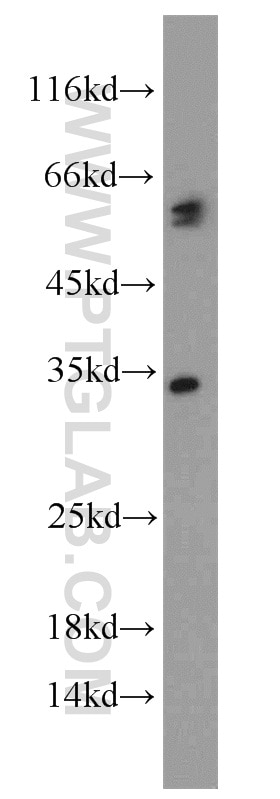Anticorps Polyclonal de lapin anti-Caspase 10/p23/17/p12
Caspase 10/p23/17/p12 Polyclonal Antibody for WB, IP, IF, IHC, ELISA
Hôte / Isotype
Lapin / IgG
Réactivité testée
Humain
Applications
WB, IHC, IF/ICC, IP, ELISA
Conjugaison
Non conjugué
N° de cat : 14311-1-AP
Synonymes
Galerie de données de validation
Applications testées
| Résultats positifs en WB | cellules Jurkat traitées à la staurosporine, cellules HeLa apoptosées |
| Résultats positifs en IP | cellules HeLa |
| Résultats positifs en IHC | tissu de cancer de l'endomètre humain il est suggéré de démasquer l'antigène avec un tampon de TE buffer pH 9.0; (*) À défaut, 'le démasquage de l'antigène peut être 'effectué avec un tampon citrate pH 6,0. |
| Résultats positifs en IF/ICC | cellules HepG2 |
Dilution recommandée
| Application | Dilution |
|---|---|
| Western Blot (WB) | WB : 1:500-1:1000 |
| Immunoprécipitation (IP) | IP : 0.5-4.0 ug for 1.0-3.0 mg of total protein lysate |
| Immunohistochimie (IHC) | IHC : 1:20-1:200 |
| Immunofluorescence (IF)/ICC | IF/ICC : 1:20-1:200 |
| It is recommended that this reagent should be titrated in each testing system to obtain optimal results. | |
| Sample-dependent, check data in validation data gallery | |
Applications publiées
| WB | See 2 publications below |
Informations sur le produit
14311-1-AP cible Caspase 10/p23/17/p12 dans les applications de WB, IHC, IF/ICC, IP, ELISA et montre une réactivité avec des échantillons Humain
| Réactivité | Humain |
| Réactivité citée | Humain |
| Hôte / Isotype | Lapin / IgG |
| Clonalité | Polyclonal |
| Type | Anticorps |
| Immunogène | Caspase 10/p23/17/p12 Protéine recombinante Ag5511 |
| Nom complet | caspase 10, apoptosis-related cysteine peptidase |
| Masse moléculaire calculée | 59 kDa |
| Poids moléculaire observé | 59 kDa |
| Numéro d’acquisition GenBank | BC042844 |
| Symbole du gène | Caspase 10 |
| Identification du gène (NCBI) | 843 |
| Conjugaison | Non conjugué |
| Forme | Liquide |
| Méthode de purification | Purification par affinité contre l'antigène |
| Tampon de stockage | PBS avec azoture de sodium à 0,02 % et glycérol à 50 % pH 7,3 |
| Conditions de stockage | Stocker à -20°C. Stable pendant un an après l'expédition. L'aliquotage n'est pas nécessaire pour le stockage à -20oC Les 20ul contiennent 0,1% de BSA. |
Informations générales
Caspase 10 (CASP10) is also called MCH4, is a member of the peptidase C14A family, and contains two death
effector (DED) domains.
What is the molecular weight of CASP10?
The molecular weight of CASP10 observed on Western blots may vary depending on which of its isoform,
truncation, or cleavage forms are present. Full-length CASP10 has a propeptide with 219 amino acid and
6 isoforms produced by alternative splicing.
What is the tissue specificity of CASP10?
CASP10 is detectable in most tissues. However, there is lower expression observed in brain, kidney, colon,
prostate, and testis tissue.
What is the function of CASP10?
CASP10 plays a role in the cascade of caspases responsible for executing apoptosis. It is recruited to both the
Fas and TNFR-1 receptors in a FADD-dependent manner. CASP10 is responsible for the cleavage and activation of
caspases 3, 4, 6, 7, 8, and 9. CASP10 can be cleaved by granzyme B and autocatalytic activity to generate two
active subunits from its inactive proenzyme form.
What is the role of CASP10 in disease?
Defects in CASP10 lead to autoimmune lymphoproliferative syndrome type 2A (ALPS2A), which is characterized
by abnormal lymphocyte and dendritic cell homeostasis, as well as immune regulatory defects (PMID:16446975).
Defects in CASP10 are also a cause of familial non-Hodgkin lymphoma (NHL) and often marked by enlarged lymph
nodes, weight loss and fever (PMID:12010812), and gastric cancers (GASC) (PMID:11973654).
Protocole
| Product Specific Protocols | |
|---|---|
| WB protocol for Caspase 10/p23/17/p12 antibody 14311-1-AP | Download protocol |
| IHC protocol for Caspase 10/p23/17/p12 antibody 14311-1-AP | Download protocol |
| IF protocol for Caspase 10/p23/17/p12 antibody 14311-1-AP | Download protocol |
| IP protocol for Caspase 10/p23/17/p12 antibody 14311-1-AP | Download protocol |
| Standard Protocols | |
|---|---|
| Click here to view our Standard Protocols |
Publications
| Species | Application | Title |
|---|---|---|
Front Microbiol Enterovirus 71 Induces INF2 Cleavage via Activated Caspase-2 in Infected RD Cells. | ||
Front Pharmacol A New Chalcone Derivative C49 Reverses Doxorubicin Resistance in MCF-7/DOX Cells by Inhibiting P-Glycoprotein Expression. |
